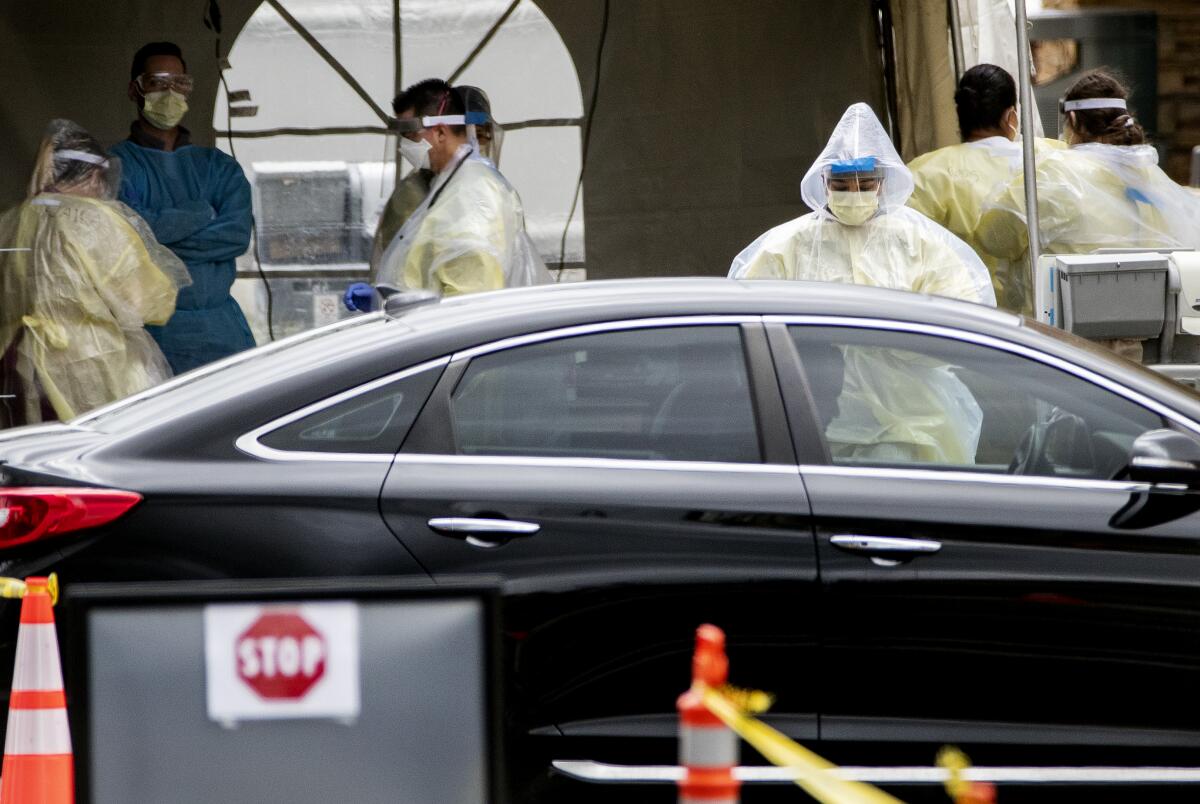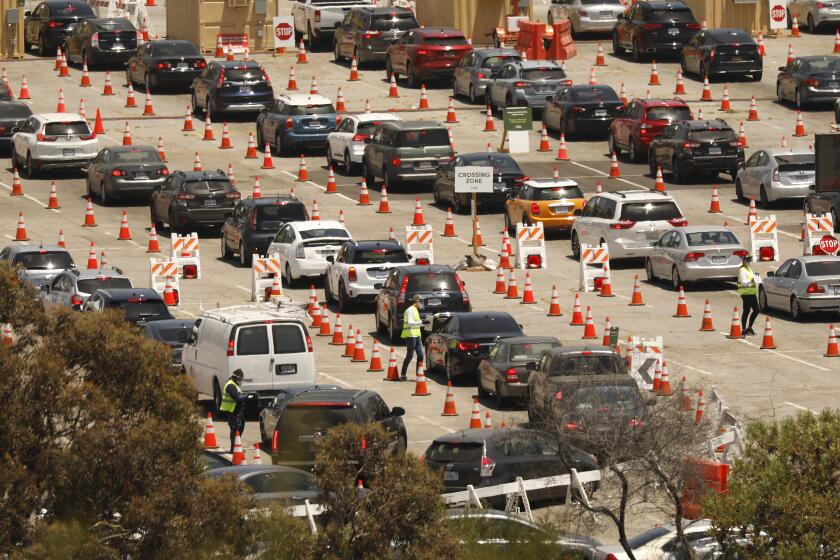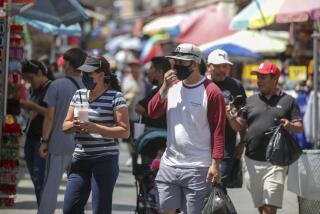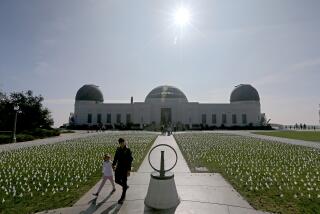Record day of coronavirus deaths in California raises new alarms

- Share via
Conditions continued to deteriorate in many parts of California on Wednesday with a surge of new coronavirus cases as well as a troubling rise in COVID-19 deaths.
The state recorded its highest single-day coronavirus death toll Wednesday, with 149 fatalities reported, according to a Los Angeles Times county-by-county tally. That eclipsed the previous highest daily death toll, 132, recorded May 19, according to The Times’ California coronavirus tracker.
Los Angeles County recorded its worst daily coronavirus death toll in at least a month, which may be the result of increased disease transmission that probably began around Memorial Day as the economy reopened and people began going to social gatherings and dining out.
The county’s single-day death toll of 61 was the highest since June 2, when 62 deaths were reported.
“Our cases are rising. The rate of infection is increasing. And the number of hospitalizations are up. And today, we’re even seeing a small increase in the number of deaths,” Barbara Ferrer, the Los Angeles County director of public health, said Wednesday.
L.A. County records highest daily coronavirus death toll in at least a month
Ferrer said the county stands at a “critical juncture” with people fed up with the stay-at-home order trying to return to a pre-pandemic way of life. That has contributed to the increased spread of the disease in Southern California, she said.
“We’re entering a phase in which we’re seeing community spread and hospitalizations like we saw in late April, and what we hoped would be the height of infection here in L.A. County,” she said.
“Tragically, we do expect that more of our loved ones and neighbors may die of COVID-19 in the coming weeks with all of the increases we’re seeing with hospitalizations.”
Ferrer added: “Even though we miss the way it used to be, it’s still not safe or smart to visit with friends or family we don’t live with.”
California records highest single-day coronavirus death toll
When the county began reopening businesses and protests erupted over the death of George Floyd, officials encouraged all residents to get tested for the virus, especially if they had been at a protest or other large gathering. But in recent weeks, the county has not been able to meet the high demand for testing.
Now, rather than encouraging widespread testing, health officials are asking individuals to get tested only if they have symptoms, work in high-risk environments or have come into contact with a person with a known exposure. At the same time, officials are trying to add additional county-funded testing sites and increase appointments at existing sites to keep up with demand.
“This is the type of testing that is critical for public health purposes to be able to trace contacts and identify those who might transmit the virus to others,” said Dr. Christina Ghaly, L.A. County’s director of health services. “If you are exposed to someone with a known infection, then you need to quarantine yourself for 14 days. This is irrespective of whether or not you got a test and even if the test is negative.”
Orange County, which has the third-highest number of coronavirus cases in the state and the fourth-most deaths, is also grappling with a surge in infections and hospitalizations in recent weeks.
The county’s positivity rate, which health officials use to gauge whether case numbers are increasing because of more testing or because there’s more disease spreading within the community, was under 8% over a seven-day period in mid-May. As of Tuesday, the county had a case rate of 222 per 100,000 residents and a positive test rate of 14.2%, according to county health data.
The state has set a desired standard average of 25 positive cases per 100,000 over a 14-day period and a seven-day average positive test rate of 8%.
The coronavirus outbreak is worsening throughout the state, with 9,500 infections recorded Tuesday — the most new cases reported in a single day since the pandemic began — and triple-digit fatalities that sent the statewide death toll past 6,500.
California cases are on pace to double every 24.8 days, a number that is used by experts to measure how quickly the virus is spreading.
Over the last week, there have been an average of 7,403 new coronavirus infections and 69.6 new deaths per day, according to data from The Times’ coronavirus tracker. With cases continuing to climb and hospitalization numbers increasing, counties across the state have been forced to roll back business reopenings to stem the spread of the virus.
On Wednesday, Gov. Gavin Newsom added Napa, Yolo and San Benito counties to the state’s watch list because of their rising case counts and increased hospitalizations. If the counties remain on the list for three or more consecutive days, the state will require them to close bars and indoor dining in restaurants, along with other indoor business operations, for at least three weeks. There are now 26 of California’s 58 counties on the list.
While San Francisco has not appeared on the watch list, county and city officials this week opted to delay loosening restrictions on businesses, including indoor dining at restaurants, which were scheduled to resume next week. The city previously had suspended the reopening of hair salons, zoos, museums and outdoor bars.
San Francisco County had 4,071 recorded cases of the coronavirus and 50 deaths as of Wednesday morning.
“We know the pause on reopening is disappointing, but we cannot risk letting the virus get out of control,” San Francisco Mayor London Breed said. “We all need to do our part by wearing face coverings, keeping your distance from others, and getting tested so we can get to a place where we can safely resume reopening.”
Meanwhile, the California state Senate on Wednesday joined the Assembly in deciding not to return from its summer recess next week, citing the continued spread of the coronavirus, which has now infected several staffers and members in the Legislature.
No new return date was given in the notice sent to lawmakers Wednesday by Erika Contreras, the secretary of the Senate.
Times staff writer Ryan Murphy contributed to this report.
More to Read
Sign up for Essential California
The most important California stories and recommendations in your inbox every morning.
You may occasionally receive promotional content from the Los Angeles Times.















